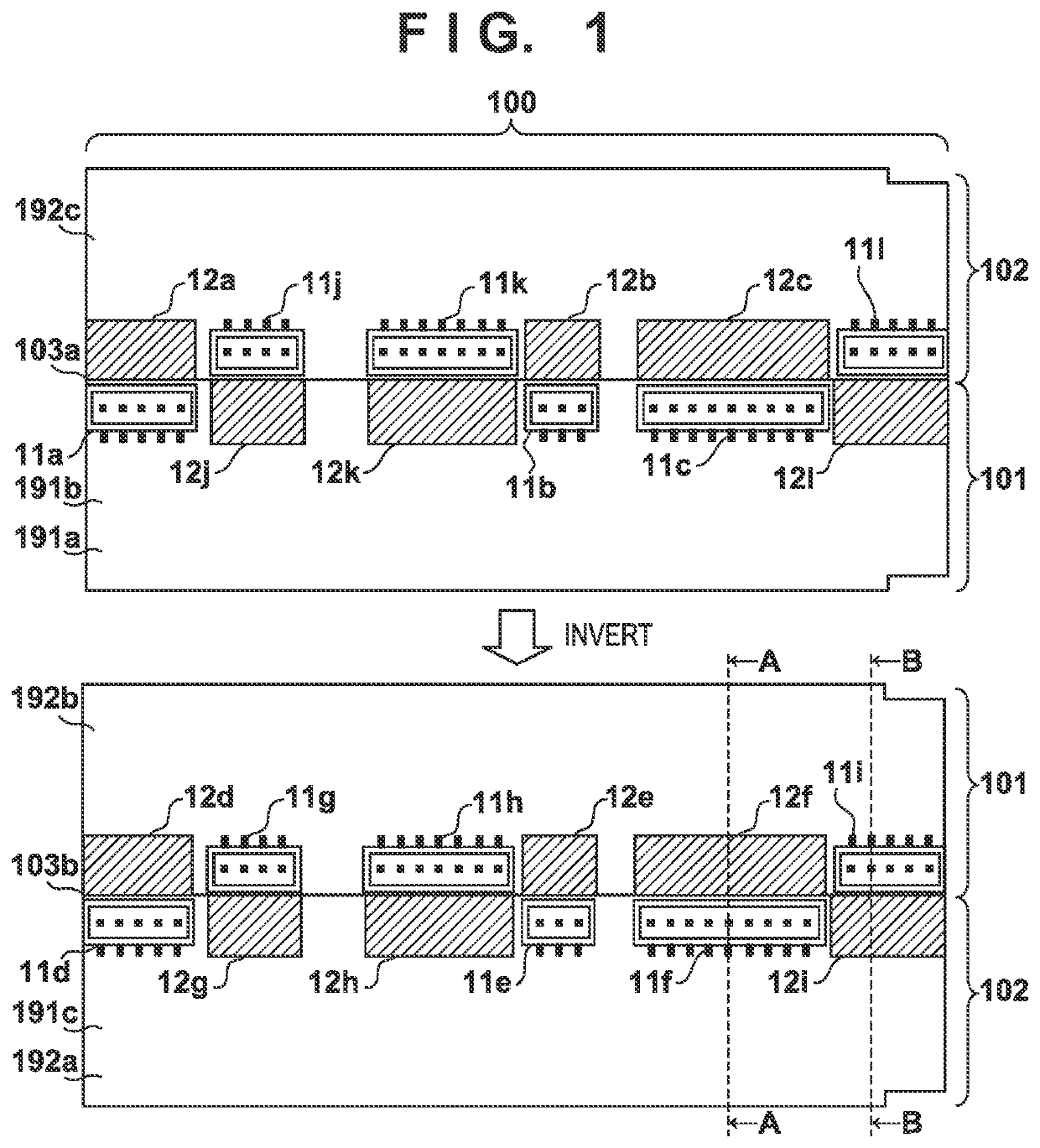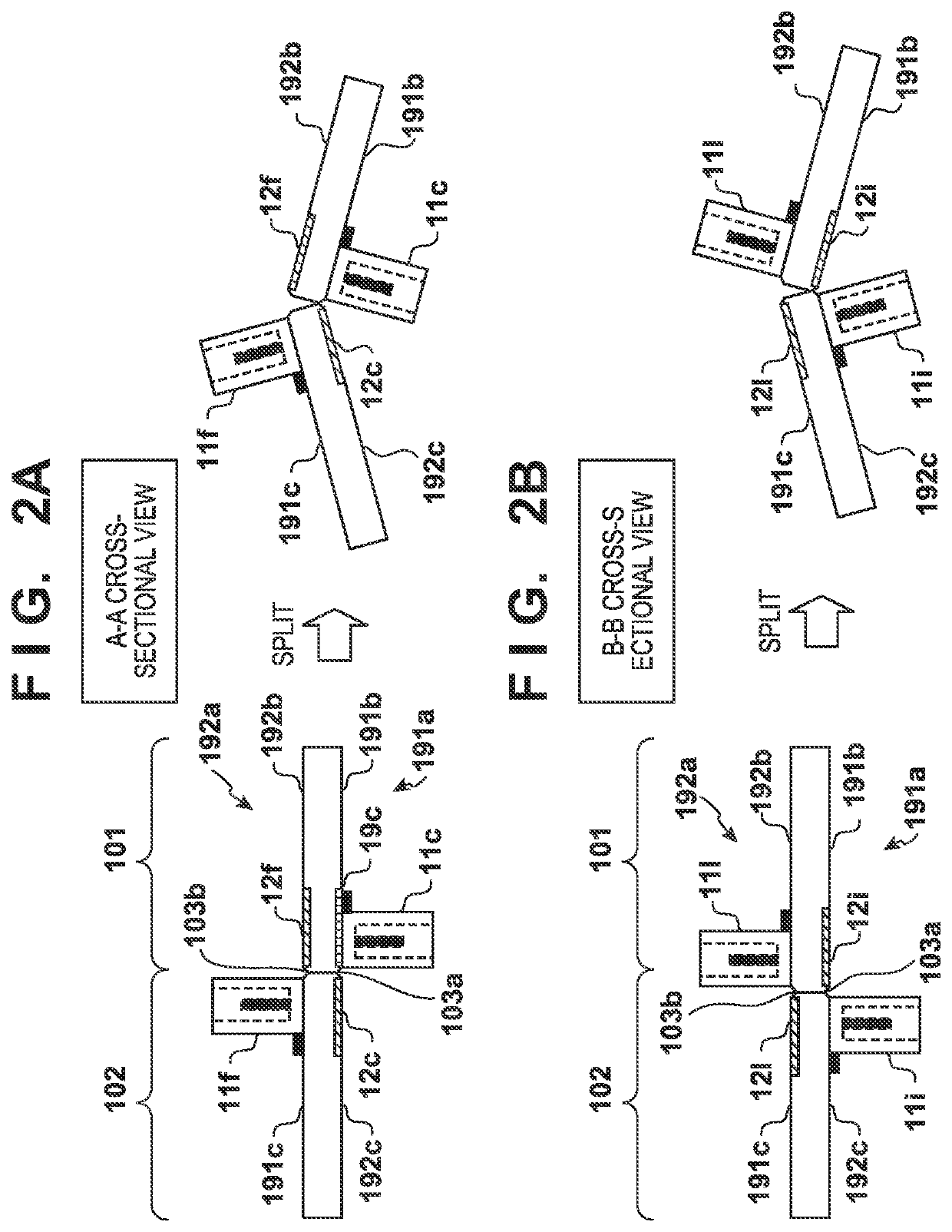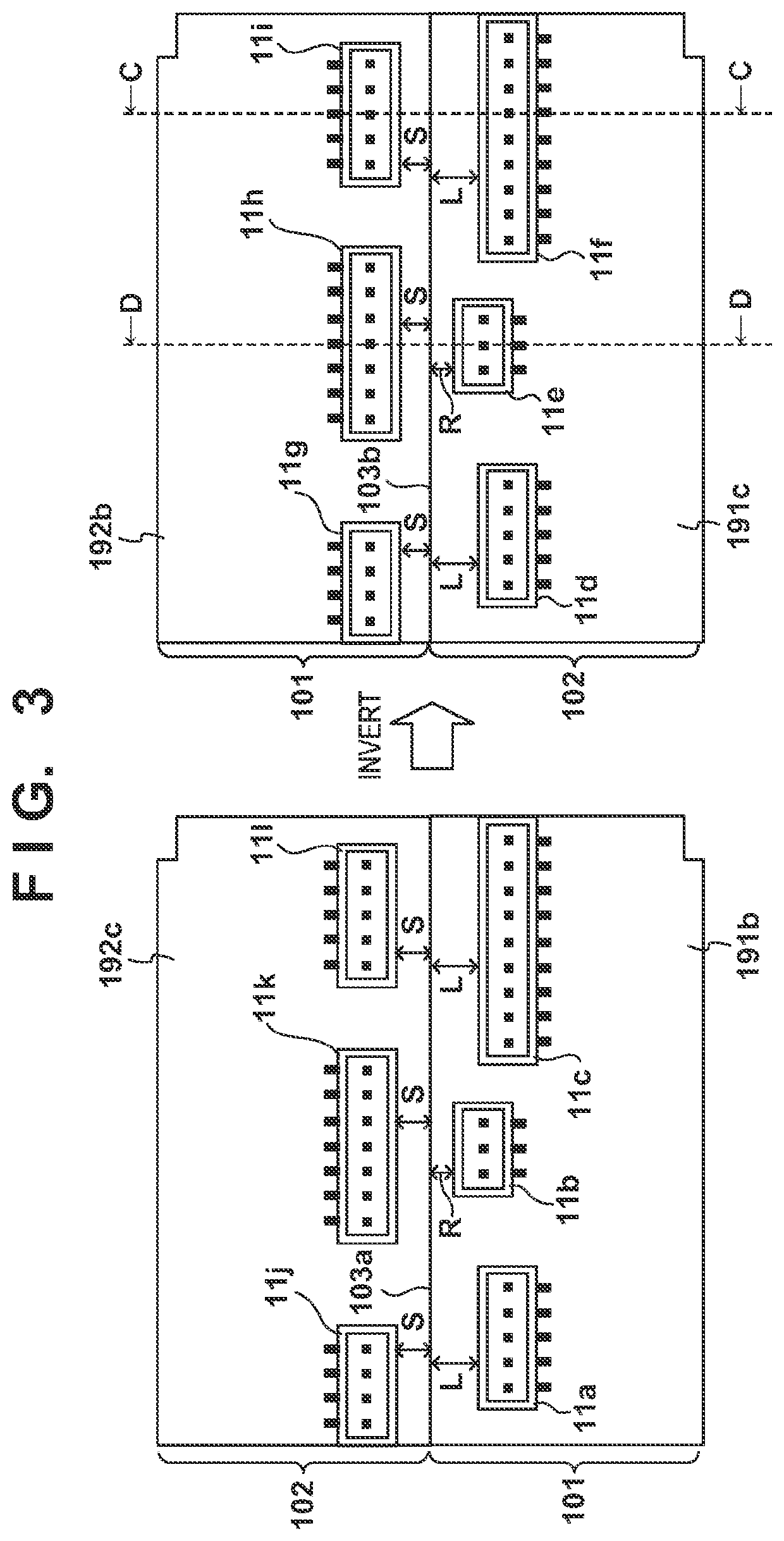Method of making a plurality of printed circuit boards from a single circuit board sheet
a technology of printed circuit boards and single circuit boards, which is applied in the direction of sustainable manufacturing/processing, coupling device connection, final product manufacturing, etc., can solve the problems of wasting resources, adding the task of cutting to the process, and the disconnector cannot be disposed near the other sid
- Summary
- Abstract
- Description
- Claims
- Application Information
AI Technical Summary
Benefits of technology
Problems solved by technology
Method used
Image
Examples
first embodiment
[0019]FIG. 1 is a diagram illustrating reversible imposition. Note that the reference signs are constituted by numbers and letters. When several reference signs having the same number refer to common items, the letters are dropped from the reference signs. A circuit board sheet 100 has a first printed circuit board 101 and a second printed circuit board 102. Separation lines 103a and 103b are provided between the first printed circuit board 101 and the second printed circuit board 102. The separation lines 103a and 103b are joints (perforations) or grooves (V-cuts) for making it easy to separate (split or cut) the first printed circuit board 101 and the second printed circuit board 102, for example. The circuit board sheet 100 has a front surface 191a and a rear surface 192a. The separation line 103a is provided on the front surface 191a of the circuit board sheet 100. The separation line 103b is provided on the rear surface 192a of the circuit board sheet 100. The first printed cir...
second embodiment
[0029]In the first embodiment, of two regions on the circuit board sheet 100 adjacent to each other with the separation line 103 therebetween, one of the regions serves as a connector mounting region, and the other serves as a non-mounting region. This suppresses interference between connectors and makes it possible to bend the circuit board sheet 100 and separate the sheet into a plurality of printed circuit boards. The second embodiment introduces a solution that is different from that described in the first embodiment. There are cases where both regions on the circuit board sheet 100 adjacent to each other with the separation line 103 therebetween serve as connector mounting regions. Connector layout conditions which ensure that even if the circuit board sheet 100 is bent in such a case, the connectors mounted in the one region will not interfere with the connectors mounted in the other region, will be described here. The “connector layout conditions” are defined by, for example,...
third embodiment
[0038]In the second embodiment, the cable insertion direction of the connectors 11g to 11l is what is called the vertical direction. Such connectors may be called a “vertical type”. In the third embodiment, the cable insertion direction of the connectors 11g to 11l is changed what is called the horizontal direction. Note that “horizontal” means being parallel to the front surface 191a and the rear surface 192a of the circuit board sheet 100. Such connectors may be called a “horizontal type”. Note that the “vertical direction” is the direction parallel to the normal direction of the first printed circuit board 101 and the second printed circuit board 102. The “horizontal direction” is the direction orthogonal to the normal direction of the first printed circuit board 101 and the second printed circuit board 102.
[0039]With the first printed circuit board 101 and the second printed circuit board 102 described in the first and second embodiments, vertical type connectors 11a to 11l are ...
PUM
 Login to view more
Login to view more Abstract
Description
Claims
Application Information
 Login to view more
Login to view more - R&D Engineer
- R&D Manager
- IP Professional
- Industry Leading Data Capabilities
- Powerful AI technology
- Patent DNA Extraction
Browse by: Latest US Patents, China's latest patents, Technical Efficacy Thesaurus, Application Domain, Technology Topic.
© 2024 PatSnap. All rights reserved.Legal|Privacy policy|Modern Slavery Act Transparency Statement|Sitemap



